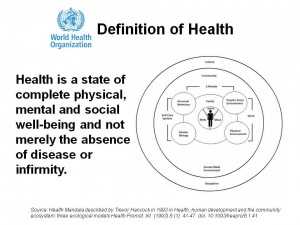 Adoption of mobile health (mHealth) apps will increase by 23% as a compound annual growth rate. according to a forecast from Arthur D. Little (ADL), featured in their report published in April 2011, Capturing Value in the mHealth Oasis.
Adoption of mobile health (mHealth) apps will increase by 23% as a compound annual growth rate. according to a forecast from Arthur D. Little (ADL), featured in their report published in April 2011, Capturing Value in the mHealth Oasis.
What is this mHealth Oasis? ADL notes that mobile network operators (MNOs — mobile phone companies) see gold in them thar’ health hills given unsustainable health economies the world over. However, ADL rightly points out that mobile health is just about as easy to conquer as any other aspect of health technology, full of minefields. ADL lays out the success factors for MNOs who want to engage in mHealth.
First, it’s not a one-size-fits-all marketplace. Given health systems’ lack of standard infrastructures, varied and expansive regulatory regimes, lack of aligned financial incentive, markets in both developing and developed countries need deep study and targeted strategies.
Second, partnering in regional/local markets will be key to getting traction in mHealth. That’s because the value created will have to be shared among the partners delivering mHealth, ADL recognizes. If MNOs serve as connectivity partners only, then they may only achieve 20% of the total value of mHealth; if the MNO can expand into a larger role end-to-end, they may garner nearly one-half of the market value of mHealth.
Finally, market-by-market, an MNO might keep the solutions more simple versus more complex. Texting and helplines can go a long way to adding tremendous value for health citizens in developing economies. In developed nations, smartphones and apps will drive mHealth, ADL expects, with remote monitoring driving a lot of value for countries dealing with high chronic disease burdens for diabetes, heart failure, and other cash-consuming conditions.
Health Populi’s Hot Points: The bottom-line of leveraging the local health ecosystem is the key message here. Note the health ecosystem mandala in the chart, developed by Canadian public health visionary Trevor Hancock in 1993. The ecosystem goes beyond health care providers and includes all the touchpoints in a health citizen’s daily life. It’s in the many micro-choices the health consumer makes in the course of a day that bolsters health. Those choices largely determine that individual’s consumption of expensive health services. MNOs need to understand those local/regional ecosystems, medical and health culture, and ultimately what nudges health citizens to make good choices — including, health engagement and what mobile technology can do to underpin and sustain that health engagement. It’s not about the technology, per se, but the underlying design and usability, along with the incentives that the MNO has little to do with. Thus, partnering in that ecosystem will lead to best success for the patient, the health system, and the MNO.




 I'm in amazing company here with other #digitalhealth innovators, thinkers and doers. Thank you to Cristian Cortez Fernandez and Zallud for this recognition; I'm grateful.
I'm in amazing company here with other #digitalhealth innovators, thinkers and doers. Thank you to Cristian Cortez Fernandez and Zallud for this recognition; I'm grateful. Jane was named as a member of the AHIP 2024 Advisory Board, joining some valued colleagues to prepare for the challenges and opportunities facing health plans, systems, and other industry stakeholders.
Jane was named as a member of the AHIP 2024 Advisory Board, joining some valued colleagues to prepare for the challenges and opportunities facing health plans, systems, and other industry stakeholders.  Join Jane at AHIP's annual meeting in Las Vegas: I'll be speaking, moderating a panel, and providing thought leadership on health consumers and bolstering equity, empowerment, and self-care.
Join Jane at AHIP's annual meeting in Las Vegas: I'll be speaking, moderating a panel, and providing thought leadership on health consumers and bolstering equity, empowerment, and self-care.